Abstract
The survival time of mice after i.v. injection of the cancerostatic lectins, abrin and ricin was recorded. The LD50 dose was found to be 10-13 ng and 55-65 ng per mouse for abrin and ricin, respectively. Increasing amounts of toxin reduced the survival time, reaching a minimum of about 10 h. Lactose injected with ricin, provided partial protection against ricin, as measured by the survival time. Abrin and ricin labelled with 125I, and shown to retain their full toxic activity, were injected into mice. Most of the radioactivity found in the organs was present in the form of intact toxins, at least up to 5 h after injection. After i.v. injection the highest concentration/g tissue was found in spleen, followed by kidneys, heart, liver and thymus. The relative concentration in liver was considerably higher for ricin than for abrin. Similar results were found after i.p. injection. When lactose was administered together with ricin, almost 80% of the ricin injected was found in the liver after 30 min, compared to 48% without lactose, and the amount in other organs was concurrently reduced. The elimination of total radioactivity was much faster for ricin than abrin. The radioactivity found in the urine was largely present in non-trichloroacetic acid precipitable form, indicating that the toxins were extensively degraded before excretion.
Full text
PDF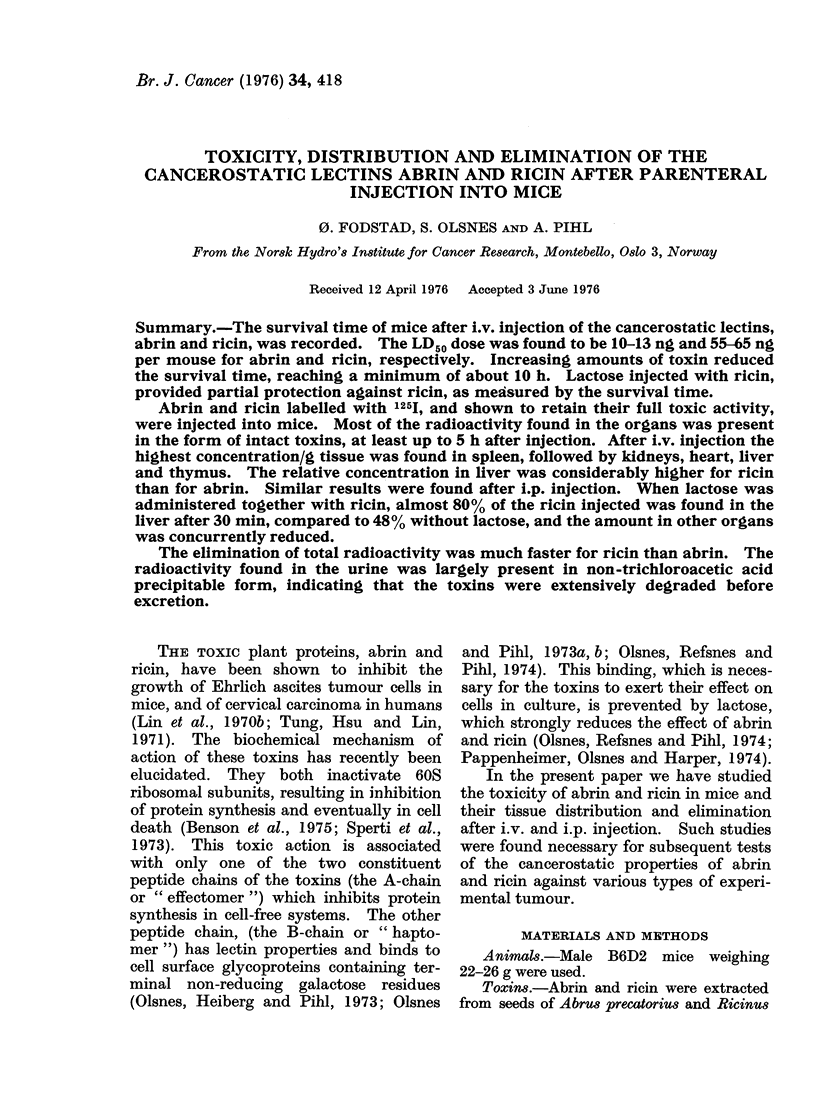
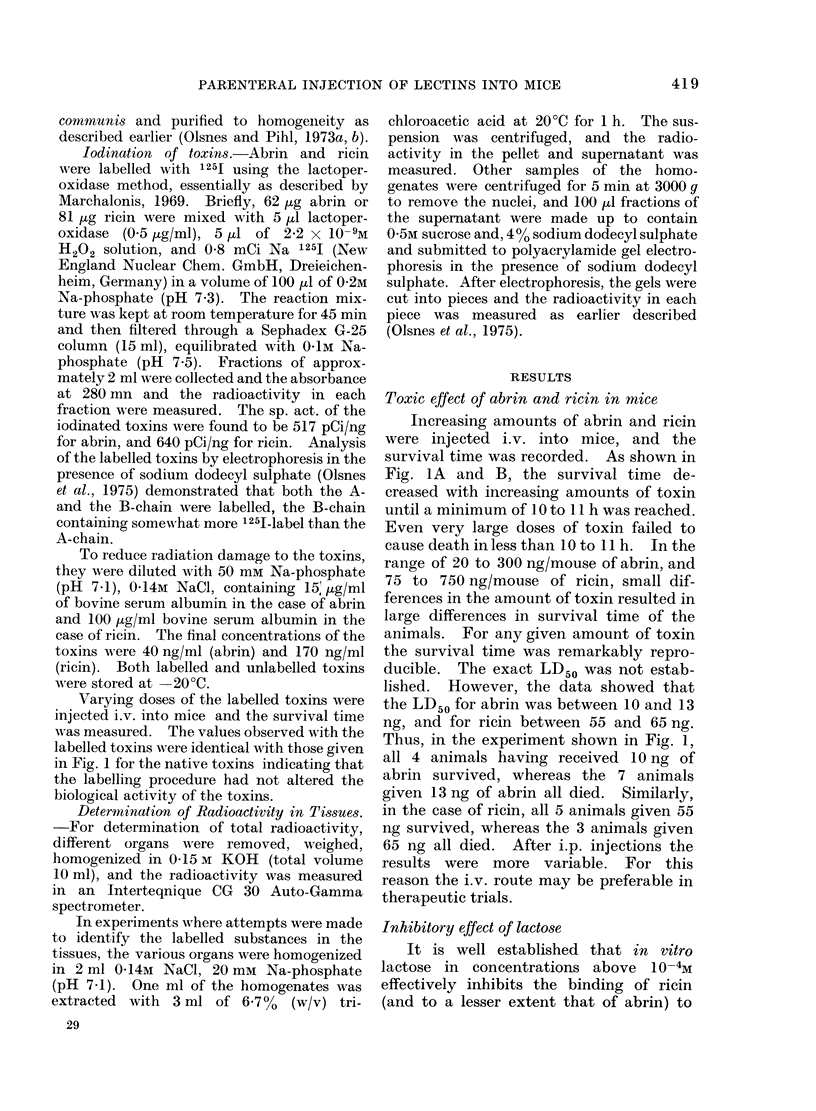
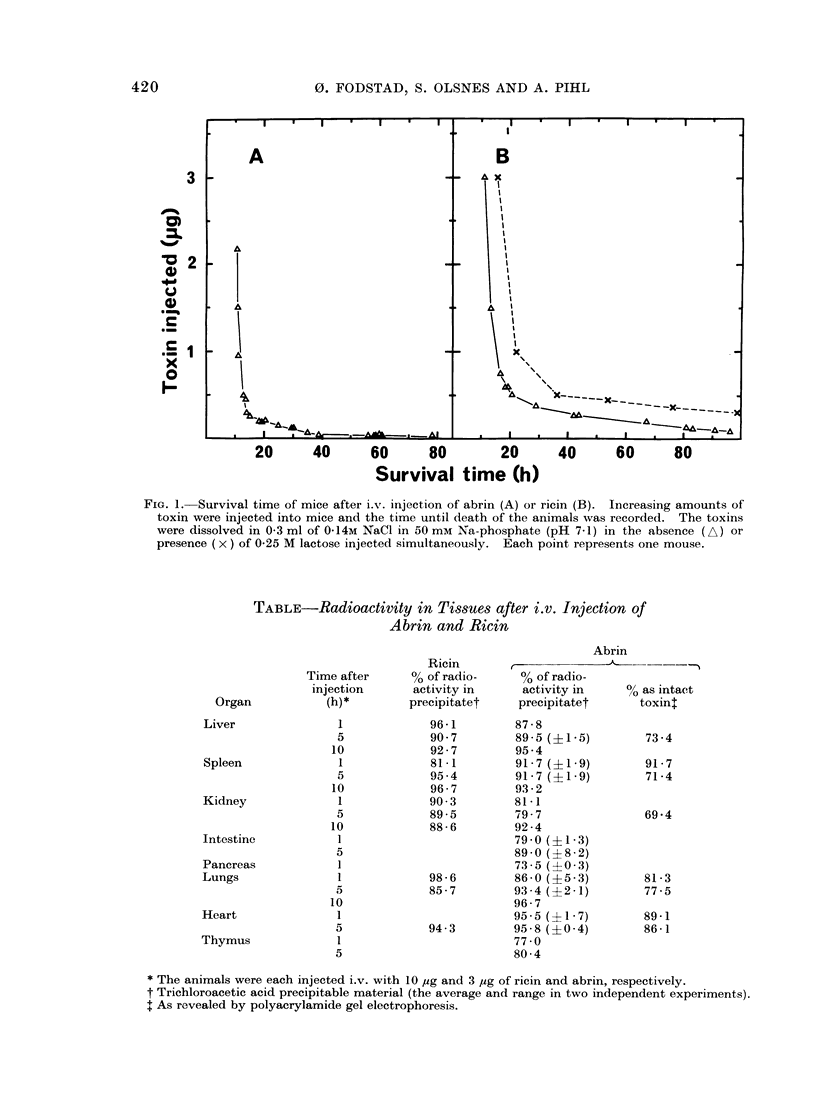

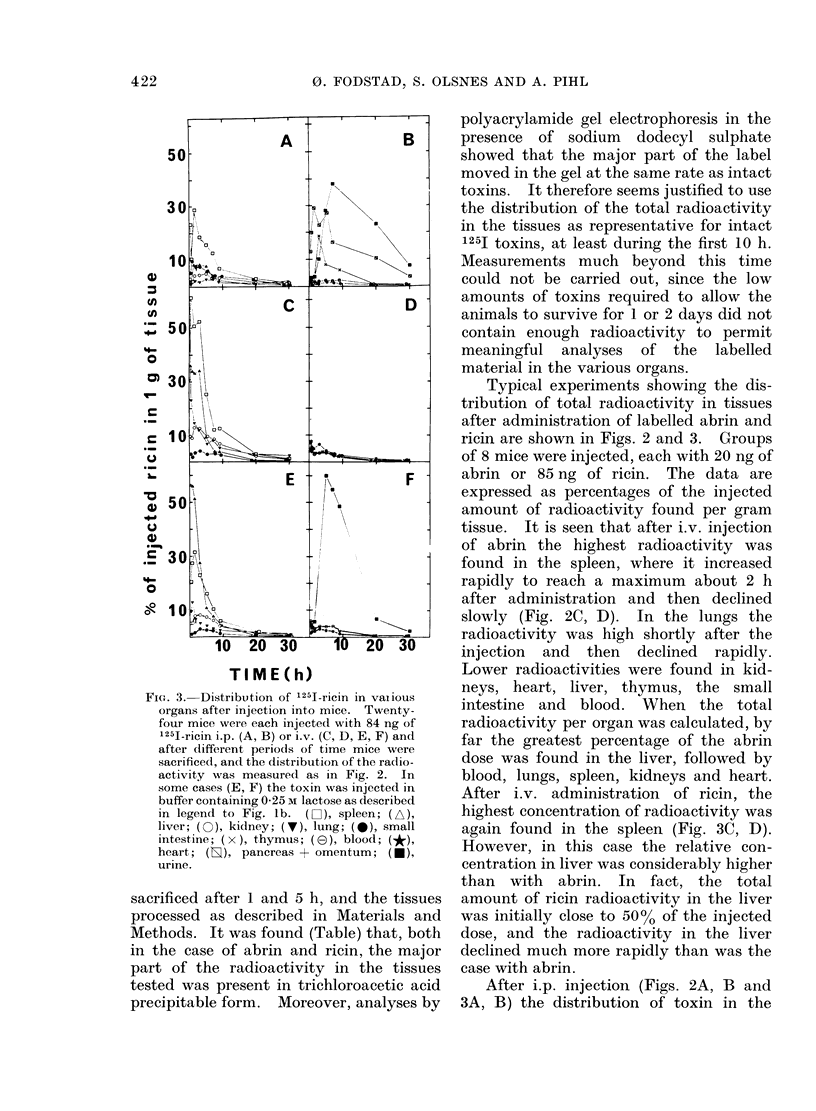
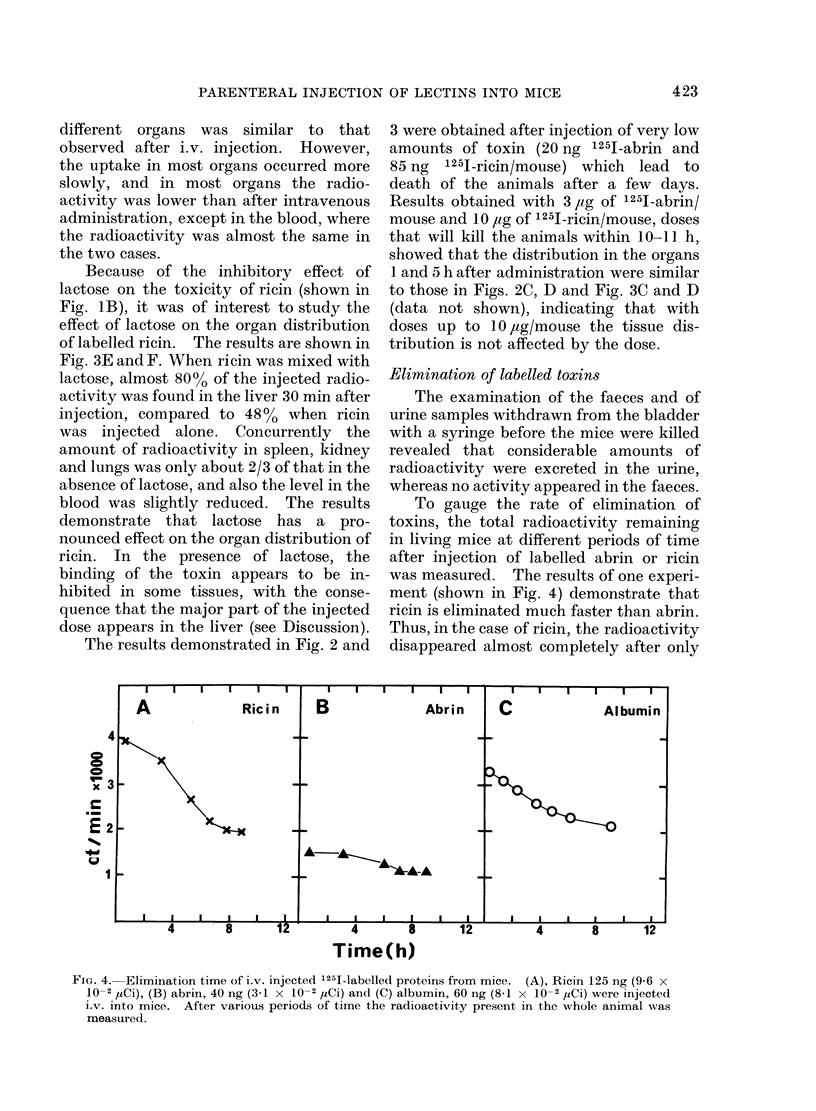
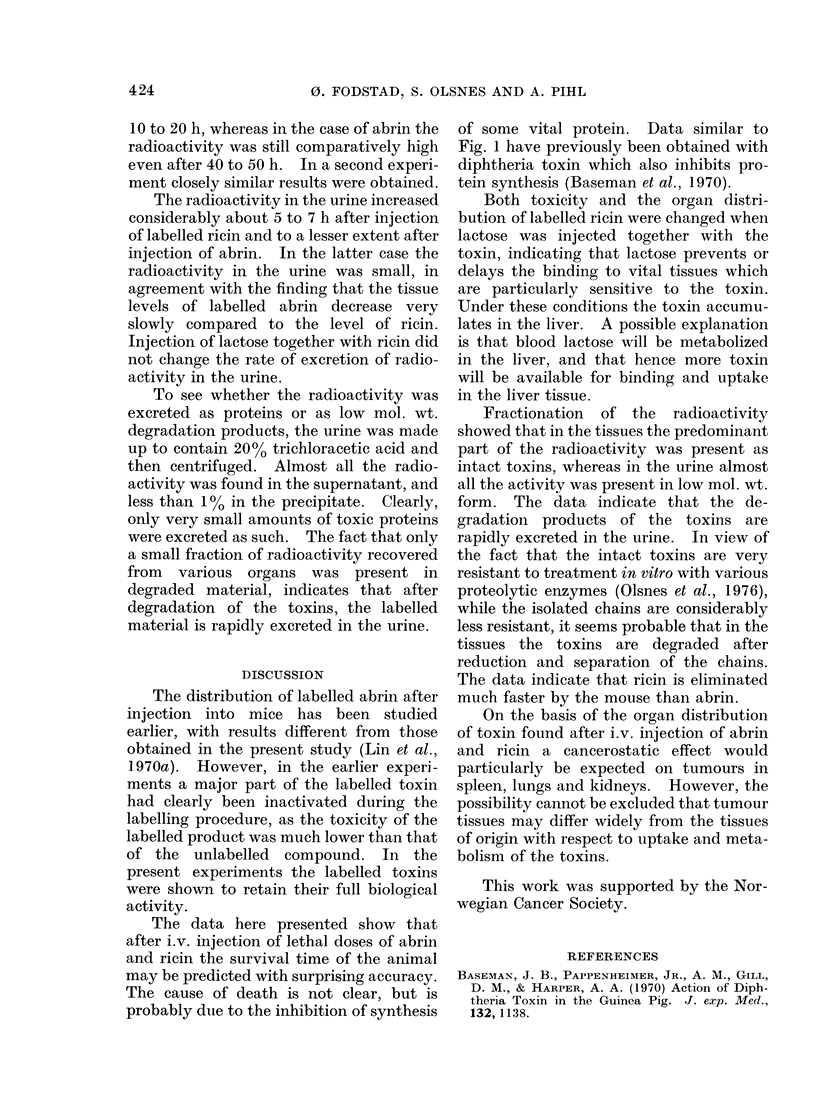

Selected References
These references are in PubMed. This may not be the complete list of references from this article.
- Baseman J. B., Pappenheimer A. M., Jr, Gill D. M., Harper A. A. Action of diphtheria toxin in the guinea pig. J Exp Med. 1970 Dec 1;132(6):1138–1152. doi: 10.1084/jem.132.6.1138. [DOI] [PMC free article] [PubMed] [Google Scholar]
- Lin J. Y., Tserng K. Y., Chen C. C., Lin L. T., Tung T. C. Abrin and ricin: new anti-tumour substances. Nature. 1970 Jul 18;227(5255):292–293. doi: 10.1038/227292a0. [DOI] [PubMed] [Google Scholar]
- Marchalonis J. J. An enzymic method for the trace iodination of immunoglobulins and other proteins. Biochem J. 1969 Jun;113(2):299–305. doi: 10.1042/bj1130299. [DOI] [PMC free article] [PubMed] [Google Scholar]
- Olsnes S., Pihl A. Different biological properties of the two constituent peptide chains of ricin, a toxic protein inhibiting protein synthesis. Biochemistry. 1973 Jul 31;12(16):3121–3126. doi: 10.1021/bi00740a028. [DOI] [PubMed] [Google Scholar]
- Olsnes S., Pihl A. Isolation and properties of abrin: a toxic protein inhibiting protein synthesis. Evidence for different biological functions of its two constituent-peptide chains. Eur J Biochem. 1973 May;35(1):179–185. doi: 10.1111/j.1432-1033.1973.tb02823.x. [DOI] [PubMed] [Google Scholar]
- Olsnes S., Pihl A. Treatment of abrin and ricin with -mercaptoethanol opposite effects on their toxicity in mice and their ability to inhibit protein synthesis in a cell-free system. FEBS Lett. 1972 Nov 15;28(1):48–50. doi: 10.1016/0014-5793(72)80674-4. [DOI] [PubMed] [Google Scholar]
- Olsnes S., Refsnes K., Christensen T. B., Pihl A. Studies on the structure and properties of the lectins from Abrus precatorius and Ricinus communis. Biochim Biophys Acta. 1975 Sep 9;405(1):1–10. doi: 10.1016/0005-2795(75)90308-6. [DOI] [PubMed] [Google Scholar]
- Olsnes S., Refsnes K., Pihl A. Mechanism of action of the toxic lectins abrin and ricin. Nature. 1974 Jun 14;249(458):627–631. doi: 10.1038/249627a0. [DOI] [PubMed] [Google Scholar]
- Olsnes S., Sandvig K., Refsnes K., Pihl A. Rates of different steps involved in the inhibition of protein synthesis by the toxic lectins abrin and ricin. J Biol Chem. 1976 Jul 10;251(13):3985–3992. [PubMed] [Google Scholar]
- Pappenheimer A. M., Jr, Olsnes S., Harper A. A. Lectins from Abrus precatorius and Ricinus communis. I. Immunochemical relationships between toxins and agglutinins. J Immunol. 1974 Sep;113(3):835–841. [PubMed] [Google Scholar]


